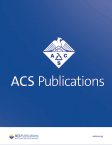摘要 PO2-28-04:与妊娠相关的三阴性乳腺癌复发
IF 3.4
Q2 PUBLIC, ENVIRONMENTAL & OCCUPATIONAL HEALTH
引用次数: 0
摘要
简介妊娠三阴性乳腺癌(TNMC)是指没有ER PR和HER2受体表达的乳腺癌。三阴性乳腺癌约占所有乳腺癌的 15-20%,是一种复发率较高的侵袭性乳腺癌 (1)。有趣的是,它通常影响年龄小于 40 岁的女性,非裔美国女性的存活率较低。本病例是一位38岁年轻女性的典型表现,她于2017年诊断为T2NO右侧三阴性乳腺癌PMH,接受了右侧乳房切除术和前哨LN活检,接受了免疫治疗和化疗,已经无癌两年,在怀孕期间发生了转移性癌症。在本病例中,我们了解了 TNBC 在妊娠期间的诊断和治疗难题。病例:一名 38 岁的非裔美国妇女,G0、T2NO 三阴性浸润性导管癌,接受了右侧乳房切除术和前哨淋巴结活检。她在接受(抗-PD-L1抗体)治疗的同时,还接受了每周一次的紫杉醇和多柔比星/环磷酰胺(AC)化疗。然而,她仍有一个 4 厘米的残留肿瘤,为此她接受了卡培他滨辅助治疗,为期 6 个月。2019 年的乳腺彩超复查显示没有恶性肿瘤迹象。2021 年,患者为 G2P2L1,因癫痫发作入院。CT 报告显示左顶叶囊性/坏死性病变肿块效应,右侧中线移位 8mm,转移至肺部和腹壁。她接受了左顶叶颅骨切除术,切除了肿瘤。在妊娠 32 周时,她在剖腹产后接受了卡铂和紫杉醇化疗,并接受了伽玛刀放射外科手术治疗转移病灶。她出现了超级难治性癫痫发作,使用治疗性麻醉剂诱导昏迷,最终去世。讨论:有关妊娠相关的三阴性乳腺癌复发及其恶化的文献很少。我们的患者病情缓解了两年,在第二次妊娠期间被诊断为转移性癌症。John 等人(2018 年)讨论了母乳喂养、胎次和 TNBC 发生之间的有趣关联,即高胎次(3 次足月妊娠)和短期母乳喂养(< 12 个月)的 TNBC 患病风险增加了 2 倍(2)。研究还表明,妊娠期或产后癌症具有侵袭性,肿瘤负荷更大,并会转移至肺、肝和脑,这与我们的患者相符。(3)结论:妊娠相关性乳腺癌在产期或产后的诊断和治疗上都具有挑战性,三阴性乳腺癌的发病率较高。这需要多学科团队的合作,非裔美国人对这一问题的认识,临床上对孕期乳房肿块的怀疑需要影像学检查,以及产后长时间的母乳喂养。诊断通常会因怀孕而延迟,因此需要对怀孕期间的诊断方式进行更多研究,以便尽早开始治疗。参考文献 Almansour NM.三阴性乳腺癌:关于流行病学、风险因素、信号通路、治疗和人工智能作用的简要回顾。前沿分子生物学》。DOI: 10.3389/fmolb.2022.836417.PMID: 35145999; PMCID: PMC8824427.John EM, Hines LM, Phipps AI, et al. 生殖史、哺乳与三阴性乳腺癌风险:少数族裔乳腺癌病因(BEM)研究》。国际癌症杂志》。2018;142(11):2273. Doi:10.1002/ijc.31258 Amant F, Deckers S, Van Calsteren K, Loibl S, Halaska M, Brepoels L, et al. 妊娠期乳腺癌:国际共识会议的建议。Eur J Cancer (2010) 46(18):3158-68.10.1016/j.ejca.2010.09.010 引用格式:Vaidarshi Abbagoni.与妊娠相关的三阴性乳腺癌复发[摘要]。在:2023年圣安东尼奥乳腺癌研讨会论文集;2023年12月5-9日;德克萨斯州圣安东尼奥。费城(宾夕法尼亚州):AACR; Cancer Res 2024;84(9 Suppl):Abstract nr PO2-28-04.本文章由计算机程序翻译,如有差异,请以英文原文为准。
Abstract PO2-28-04: Pregnancy-associated relapse of triple-negative breast cancer
Introduction: Pregnancy Triple-negative breast cancer(TNMC) is the absence of ER PR and HER2 receptor expression. It constitutes about 15-20% of all breast cancers and is known to be the aggressive form with a high relapse rate (1). Interestingly, it usually affects women aged < 40 and has a low survival rate in African-American females. This case is a typical presentation of a 38-year-old young woman with PMH of T2NO right triple-negative breast cancer diagnosed in 2017 s/p right mastectomy with sentinel LN biopsy, received immunotherapy and chemotherapy, has been cancer-free for two years, and developed metastatic cancer during her pregnancy. In this case, we understand the diagnostic and therapeutic challenges of TNBC during pregnancy. Case: A 38-year-old African American woman, G0, T2NO triple negative invasive ductal carcinoma, underwent a right breast mastectomy and sentinel LN biopsy. She received treatment with (Anti-PD-L1 Antibody) concomitant with weekly paclitaxel and Doxorubicin/Cyclophosphamide (AC) chemotherapy. However, she had a residual 4cm tumor for which she was treated with adjuvant therapy with capecitabine for six months. A repeat Mammogram in 2019 showed no evidence of malignancy. In 2021, the patient was G2P2L1, admitted to the hospital after having a seizure. CT reported cystic/necrotic left parietal lesion mass effect with 8mm right-sided midline shift with metastasis to lungs and abdominal wall. She underwent L parietal craniectomy with resection of the tumor. At 32 weeks of gestation , chemotherapy with carboplatin and paclitaxel was given after her C-section and Gamma knife radiosurgery for metastatic lesions. She developed super refractory seizures, was induced into a coma with therapeutically anesthetic agents, and passed eventually. Discussion: Little literature exists on pregnancy-associated relapse of triple-negative breast cancer and its deterioration. Our patient was in remission for two years and was diagnosed with metastatic cancer during her second pregnancy. John et al., (2018) discussed an interesting association between breastfeeding, parity, and occurrence of TNBC, that there is a two-fold increased risk of developing TNBC with high parity(3 full-term pregnancies) and short-term breastfeeding (< 12 months) (2). Studies have also shown that cancers during or postpartum pregnancy are aggressive with more tumor burden and metastasize to the lungs, liver, and brain, which is consistent with our patient. (3) Conclusion: Pregnancy-associated breast cancer is diagnostically and therapeutically challenging during or in the postpartum period and with a high propensity of the triple-negative type. It requires a multidisciplinary team approach, awareness in the African American population, clinical suspicion of breast mass during pregnancy warrants imaging, and prolonged breastfeeding postpartum. Diagnosis is usually delayed due to pregnancy, and more research is needed on the diagnostic modalities during pregnancy for early treatment initiation. References
Almansour NM. Triple-Negative Breast Cancer: A Brief Review About Epidemiology, Risk Factors, Signaling Pathways, Treatment and Role of Artificial Intelligence. Front Mol Biosci. 2022 Jan 25;9:836417. doi: 10.3389/fmolb.2022.836417. PMID: 35145999; PMCID: PMC8824427.
John EM, Hines LM, Phipps AI, et al. Reproductive history, breast-feeding and risk of triple-negative breast cancer: The Breast Cancer Etiology in Minorities (BEM) study. International Journal of Cancer. 2018;142(11):2273. doi:10.1002/ijc.31258
Amant F, Deckers S, Van Calsteren K, Loibl S, Halaska M, Brepoels L, et al. Breast cancer in pregnancy: recommendations of an international consensus meeting. Eur J Cancer (2010) 46(18):3158–68. 10.1016/j.ejca.2010.09.010
Citation Format: Vaidarshi Abbagoni. Pregnancy-associated relapse of triple-negative breast cancer [abstract]. In: Proceedings of the 2023 San Antonio Breast Cancer Symposium; 2023 Dec 5-9; San Antonio, TX. Philadelphia (PA): AACR; Cancer Res 2024;84(9 Suppl):Abstract nr PO2-28-04.
求助全文
通过发布文献求助,成功后即可免费获取论文全文。
去求助
来源期刊

ACS Chemical Health & Safety
PUBLIC, ENVIRONMENTAL & OCCUPATIONAL HEALTH-
CiteScore
3.10
自引率
20.00%
发文量
63
期刊介绍:
The Journal of Chemical Health and Safety focuses on news, information, and ideas relating to issues and advances in chemical health and safety. The Journal of Chemical Health and Safety covers up-to-the minute, in-depth views of safety issues ranging from OSHA and EPA regulations to the safe handling of hazardous waste, from the latest innovations in effective chemical hygiene practices to the courts'' most recent rulings on safety-related lawsuits. The Journal of Chemical Health and Safety presents real-world information that health, safety and environmental professionals and others responsible for the safety of their workplaces can put to use right away, identifying potential and developing safety concerns before they do real harm.
 求助内容:
求助内容: 应助结果提醒方式:
应助结果提醒方式:


